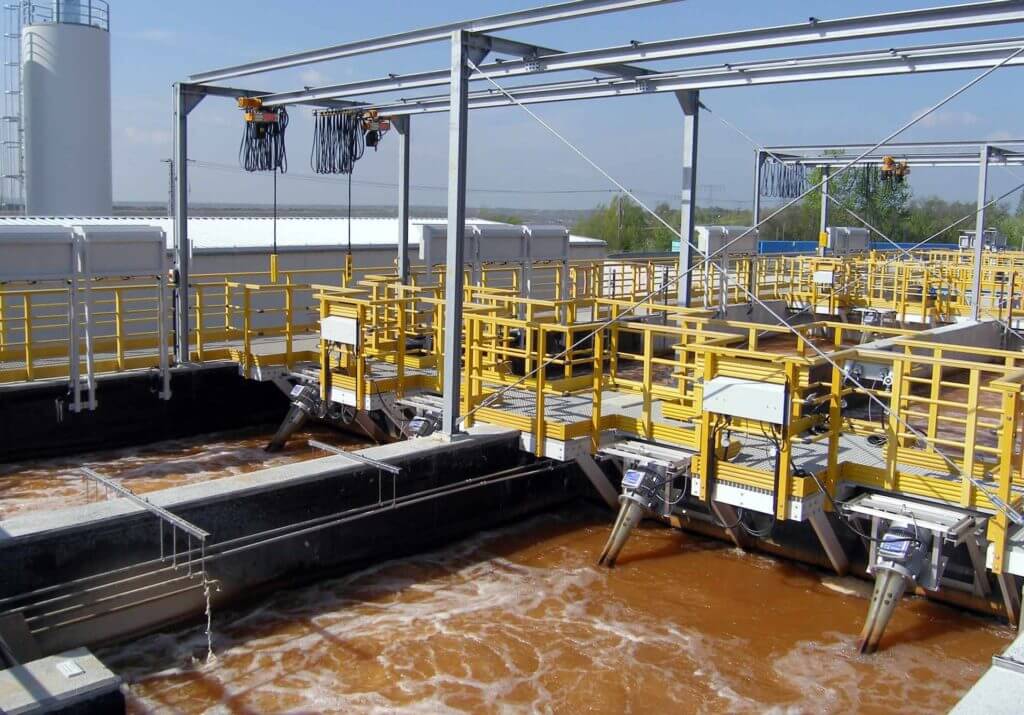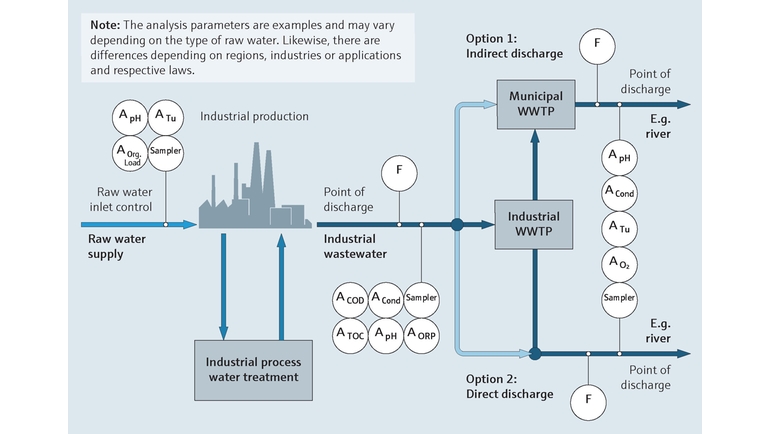Industrial Waste Water Treatment-- Comprehensive Solutions for Wastewater Disposal
Industrial Waste Water Treatment-- Comprehensive Solutions for Wastewater Disposal
Blog Article
Secret Techniques in Industrial Waste Water Therapy Procedures
The therapy of commercial wastewater is a critical facet of ecological monitoring, entailing a series of methods created to alleviate the impact of contaminants. From the fundamental physical approaches that divide solids to the advanced chemical and biological procedures that target particular toxins, each method plays a vital duty in accomplishing water high quality requirements. Developments in technologies such as membrane layer purification and advanced oxidation procedures provide cutting-edge options for improving therapy efficiency. Comprehending how these approaches adjoin and their implications for sustainability increases crucial concerns about the future of wastewater administration in market.
Physical Treatment Techniques
Exactly how successfully can physical treatment methods deal with the intricacies of industrial wastewater? Physical treatment techniques play an essential function in the initial stages of wastewater administration, focusing mainly on the removal of solids and huge particulates. Techniques such as sedimentation, flotation protection, and purification are essential for minimizing the focus of put on hold solids, thereby improving the effectiveness of succeeding therapy procedures.
Sedimentation entails the gravitational settling of solids, permitting the splitting up of much heavier products from the wastewater. This technique is especially effective in making clear water prior to organic or chemical treatments. Filtering, on the various other hand, uses numerous media to catch particulate matter, ensuring that smaller sized pollutants are gotten rid of. This method can be customized to fit various kinds of commercial effluents, creating more clear effluent streams.
Additionally, flotation protection approaches, which make use of air bubbles to raise suspended solids to the surface for removal, work in treating wastewater with high concentrations of fats, oils, and greases. In general, physical treatment approaches function as a vital primary step in the thorough administration of commercial wastewater, ensuring that the lots on subsequent treatment phases is reduced and enhancing overall therapy efficiency.
Chemical Treatment Strategies
While physical treatment techniques lay the foundation for reliable wastewater management, chemical therapy techniques are crucial for attending to the much more intricate impurities often found in commercial effluents. These approaches use numerous chemical representatives to speed up, neutralize, or oxidize harmful substances, making sure an extra extensive elimination of contaminants.
One typical approach is coagulation and flocculation, where chemical coagulants such as light weight aluminum sulfate or ferric chloride are included in advertise the gathering of put on hold fragments. This process enhances solid-liquid splitting up, minimizing turbidity and improving water top quality. Additionally, neutralization procedures are employed to adjust the pH of wastewater, making use of bases or acids to reduce the effects of acidic or alkaline streams, respectively.
Oxidation-reduction reactions play a crucial function in derogatory organic contaminants and pathogens. Chemical oxidants like ozone, chlorine, or hydrogen peroxide are made use of to break down complicated organic substances, making them less harmful or much more naturally degradable. Additionally, advanced oxidation processes (AOPs) integrate numerous oxidation techniques to boost contaminant elimination efficiency.
Organic Therapy Processes
The performance of wastewater treatment is dramatically boosted by organic therapy procedures, which harness the all-natural metabolic activities of bacteria to decay raw material and eliminate toxins. Industrial Waste Water Treatment. These procedures primarily entail anaerobic and cardio food digestion, each customized for specific sorts of wastewater
Cardiovascular therapy processes use oxygen to sustain microbial development, promoting the failure of natural pollutants right into carbon dioxide and water. Usual methods include turned on sludge systems, where aeration storage tanks help with the blending of click here for more wastewater with microbes, and flowing filters, which motivate biofilm advancement on media surface areas.
Conversely, anaerobic treatment procedures happen in the absence of oxygen, making use of anaerobic microorganisms to decay raw material, resulting in biogas production, a renewable resource source. Anaerobic digesters are commonly utilized in commercial setups for this objective, effectively lowering the volume of sludge while producing important biogas.
The selection of an organic treatment technique depends upon wastewater attributes, therapy goals, and regulative criteria. The combination of organic processes in wastewater therapy not just boosts pollutant removal effectiveness but likewise promotes sustainability by reducing chemical usage and sustaining source healing.
Advanced Oxidation Processes

Typical AOP strategies include Fenton's reagent, photocatalysis, and ozonation. Fenton's reagent, a combination of hydrogen peroxide and ferrous iron, catalyzes the formation of hydroxyl radicals, making it efficient for dealing with wastewater containing phenolic compounds and various other recalcitrant compounds.
AOPs offer numerous benefits, consisting of lowered sludge manufacturing and the ability to deal with wastewater with high focus of natural contaminants. However, the execution of AOPs requires careful consideration of functional specifications and cost-effectiveness, ensuring that these advanced techniques are suitably incorporated into existing wastewater treatment systems.
Membrane Layer Purification Technologies

Microfiltration is reliable for removing suspended solids and microorganisms, while ultrafiltration targets smaller sized natural particles and viruses. Nanofiltration links the gap in between ultrafiltration and turn around osmosis, effectively eliminating natural compounds and divalent ions. Reverse osmosis supplies the highest possible degree of filtration, made use of primarily for desalination and removing mono-valent ions.
Membrane technologies offer various advantages, consisting of low power consumption compared to conventional treatment methods, modular design for scalability, and the capacity for water recovery and reuse. Nevertheless, difficulties such as membrane fouling and the need for regular maintenance must be addressed to ensure system efficacy. Overall, membrane layer purification innovations represent an important component of modern commercial wastewater treatment strategies, advertising sustainability and source conservation in water management.
Conclusion
Finally, commercial wastewater treatment employs a varied range of techniques, consisting of physical, chemical, organic, and advanced approaches. Each strategy plays a crucial function in click this effectively addressing various contaminants, improving water high quality, and promoting resource sustainability. The integration of these methods fosters an extensive therapy method, guaranteeing that industrial effluents fulfill regulative requirements while reducing ecological effect. Proceeded improvements in these approaches will certainly even more improve the performance and effectiveness of wastewater therapy processes in commercial setups.
The treatment of commercial wastewater is a vital element of environmental administration, including an array of techniques created to minimize the impact of pollutants.Exactly how properly can physical treatment methods attend to the intricacies of commercial wastewater?Advanced oxidation procedures (AOPs) represent an advanced technique in commercial wastewater therapy, designed to efficiently deteriorate natural toxins that are usually resistant to conventional treatment methods (Industrial Waste Water Treatment).In final thought, commercial wastewater therapy utilizes a varied selection of strategies, consisting of physical, chemical, biological, and progressed techniques. Continued developments in these methodologies will certainly better improve the efficiency and efficiency of wastewater treatment procedures in industrial setups
Report this page